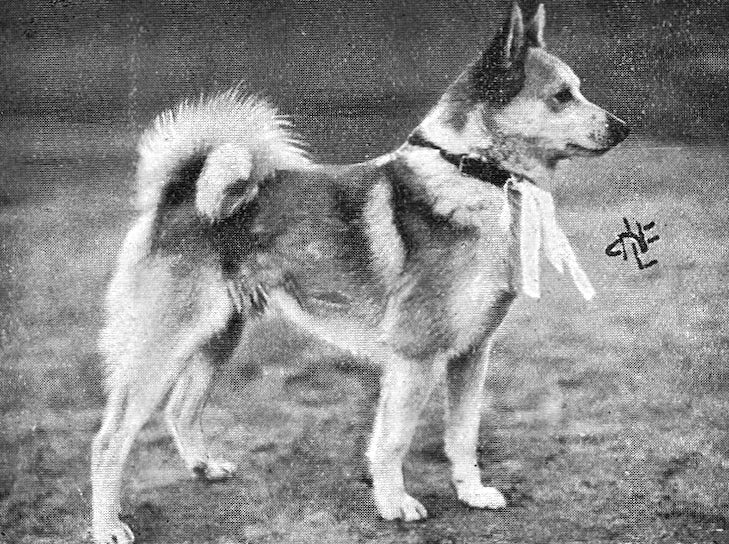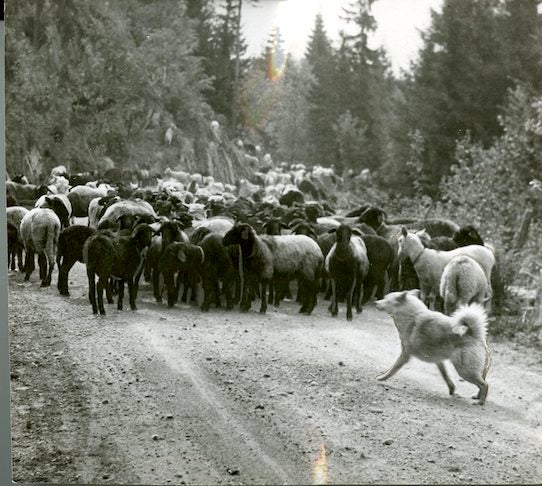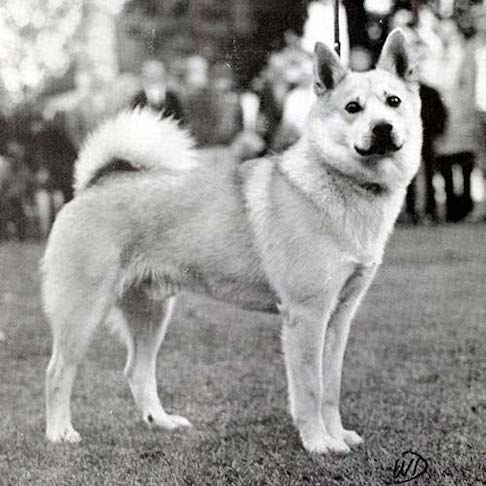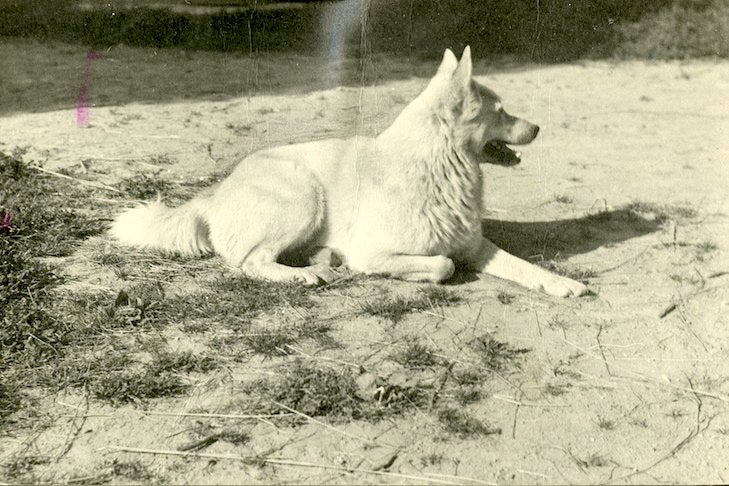He was powerfully built, towering a good six inches above his brothers, and was probably a chieftain or great warrior. Whoever he was, in his lifetime he must have commanded tremendous respect, even awe. That much was clear 10 centuries after his death from the way he had been sent to his final rest.
Archeologists uncovered his tomb in 1880 beneath a hill on the Gokstad farm near Oslo. The 78-foot-long Langskipet, a Viking warship, was stocked with everything needed for the journey into the afterlife.
Among his treasures were the skeletal remains of six dogs.
It might seem fitting that a man of such stature would have an equally imposing animal, perhaps a fierce molossus. But five of the six skeletons unearthed at Gokstad were small, lithe, spitz-like dogs with wedge-shaped skulls.
When the Vikings needed someone to accompany their leader into Valhalla, they picked a dog very much like today’s Norwegian Buhund.

A thousand years later, fans of this ancient breed will enthusiastically tell you why.
Small and sturdy, Buhunds learn quickly, and are considered to be the most trainable of all the spitz breeds. As dogs developed for rigorous work, they are relatively free of major health issues and possess a sparkling, eager personality.
But what is it about this breed that would appeal to a Viking? People who live with them talk of another quality, something they share with the ancient seafaring tribe.
“The Vikings had a tremendous moral fiber, courage under fire,” says Canadian fancier Dawne Deeley. “The Finns have a word for it, sisu. It defies translation, but it means honor, courage, stubborness, determination, perseverance. You stared death in the face; you never flinched from a job that had to be done. You never turned away from a challenge. That’s a Buhund.”

Without Boundaries
Dogs like today’s Buhund were likely onboard when the Vikings swarmed out of Denmark, Sweden, and Norway some 1,200 years ago. Evidence of the Buhund’s travels come not only from archeological findings, but in breeds native to regions where Vikings were known to have settled. One often-asked question is “Which came first, the Norwegian Buhund or the Welsh Corgi?” The two breeds share many traits, and one theory is that the Corgi descended from the dogs of the Northern invaders.
Given their history as the traveling companions to a people without boundaries, it’s ironic that these dogs would later become symbols of hearth and home.
The breed takes its name from the Norwegian word bu, which means homestead, house, or farm. For centuries, the role of these dogs in Norwegian culture was as an all-around farmhand, with responsibilities ranging from herding and protecting livestock to being the nanny for the farmer’s babies. The Buhund did it all.
The instincts to perform such tasks run strong in the blood of today’s Buhunds, whether they are working on a farm, zooming around an agility course, or taking care of a family. “One of the Buhund’s ancestral jobs was to keep the skies clear. They would watch out for hawks, eagles, ravens, other things that would come down and attack lambs or foals,” says Deeley, who lives in Victoria, British Columbia. Her Buhund, Haakon (Can. Ch. Kyon’s Min Viking Konge, which translates as My Viking King) can’t ignore his working heritage.
“When Haakon goes out in the backyard, the first thing he does is a big perimeter check. He looks to see what’s in the sky. He runs to the trees to see that there’re no birds. It’s like he’s saying, This is a no-fly zone,” she says. “Anything in the air. That includes planes too. I live on the final approach to the Victoria airport. So he often has a word to say when the prop planes come over. They’re not going to land here, no sir!”

Down on the Farm
For centuries, the sturdy dogs were a fixture in rural Norway, with one or two on every farm in some regions—always there, always working, so reliable that they blended into the landscape.
Then, in the 1920s, John Sæland, a consultant for the Norwegian agricultural department, decided to bring these dependable souls into the spotlight.
Sæland organized the first Buhund show, held in 1926. That same year saw the publication of the first standard, based on a dog, Flink I, who became the first Buhund champion, according to The Norwegian Buhund, by Kitty C. Heffer (Twyning, Tewkesbury, 1972). “He was not only a show dog but proved to be a wonderful sire,” Heffer wrote. “Ch. Flink I was of ideal type, powerful and compact, wedge-shaped head, straight short back with good coat and colour. He remained a great-producing sire right on to his 14th year.”
Norwegian Buhunds became recognized in Norway in 1943, and then, as they had centuries earlier, they began to journey to other parts of the world.

Question for the Consulate
In the United States, efforts to gain recognition for the breed began in the mid-1980s, when Janet Barringer, an Illinois–based fancier of Poodles, Siberian Huskies, Belgian Tervuren, and Finnish Spitz, saw a Buhund at Crufts. Like many, she was struck by how the dogs seemed to never take their eyes off their people. She decided she had to have one.
This was easier said than done, recalls her husband, Bob. There were only two U.S. breeders at the time, and inquiries among dog people yielded nothing more specific than, “Oh, there’s this lady on Long Island.”
It took a call to the Norwegian consulate in Chicago to track down the breeder—AudMarie Ferstad Maroni. She had started a club in 1983, essentially a list of her puppy-buyers.
The records about the dogs and their people formed the seed of what would become the NBCA. When Maroni returned to Norway in 1989, she left Barringer the job of nurturing her infant organization. Barringer held the position of club president for 15 years.
As a longtime fancier of several breeds, starting with Poodles in the 1950s, Barringer decided to pursue AKC recognition from day one, her husband recalls.
He contributed his time, as well as talents as a University of Southern Illinois statistics professor, for organizing the thousands of bits of data that make up a purebred registry. When the AKC started the Foundation Stock Service, Janet insisted Bob relinquish his registry job. He did so reluctantly. “I liked being the registrar,” recalls the numbers maven.
Sadly, Janet Barringer died in 2007, before she could see the 2009 entry of her beloved Norwegian Buhunds into the AKC Herding Group.

A Word, Or Two, Or…
When you talk to a Buhund breeder on the phone, you’re likely to hear a background buzz of barks, chortles, trills, yips, and yodels. It’s not a party or static; it’s Buhunds. They are always singing.
“We call it the Norse Lullaby,” says Deeley. Buhunds have a language all their own and are not in the least bit reticent.
“They just are chatterboxes,” she says.
Their bark is a loud one, a trait that was critical for one of their jobs; guarding flocks from all kinds of predators. What they lack in size and ferociousness, they make up for in volume, loud enough to scare off a bear.
While some people love the noise, it is one of the two major drawbacks fanciers cite when talking to potential Buhund owners. The other is hair. Like most Nordic dogs, Buhunds have warm, lush coats, much of which ends up on furniture, clothes, rugs, and floors, no matter how much vacuuming is done. “Be ready for shedding, and be ready for it to come out in big handfuls,” says Goldben, who notes that the breed is still very rare in the U.S., with only about 400 registered dogs. “My house is always hairy.”
As they have throughout their history, the Norwegian Buhund continues to be the ideal partner for all kinds of adventures, opening new vistas for their people. The Vikings knew it a millennium ago: This is the perfect dog to guide a king to Valhalla

